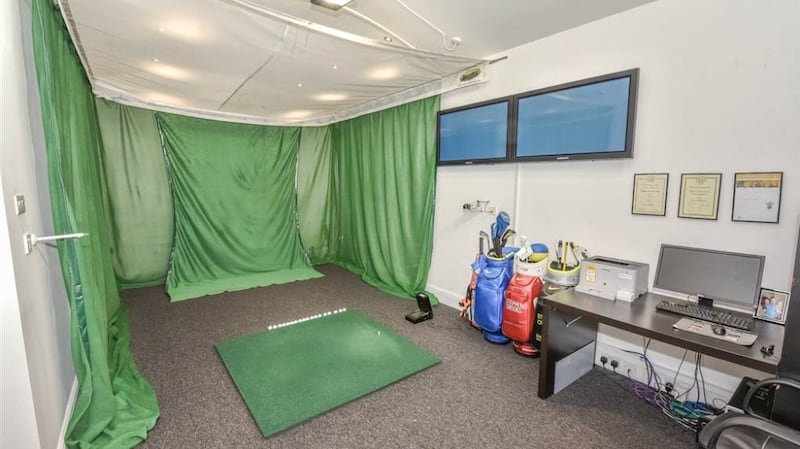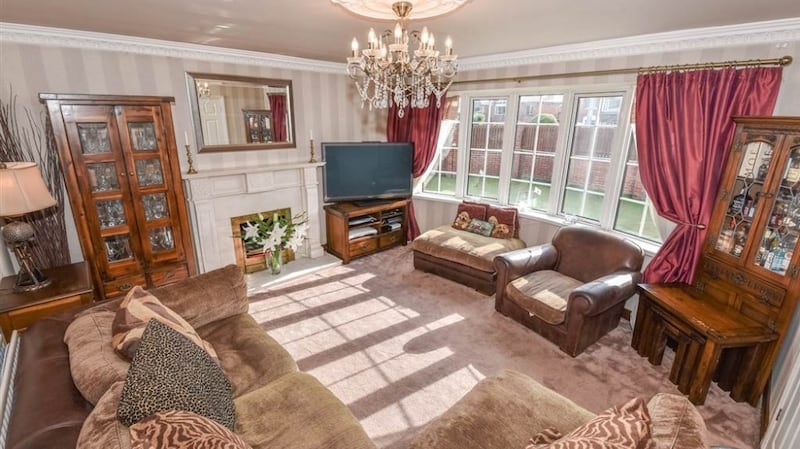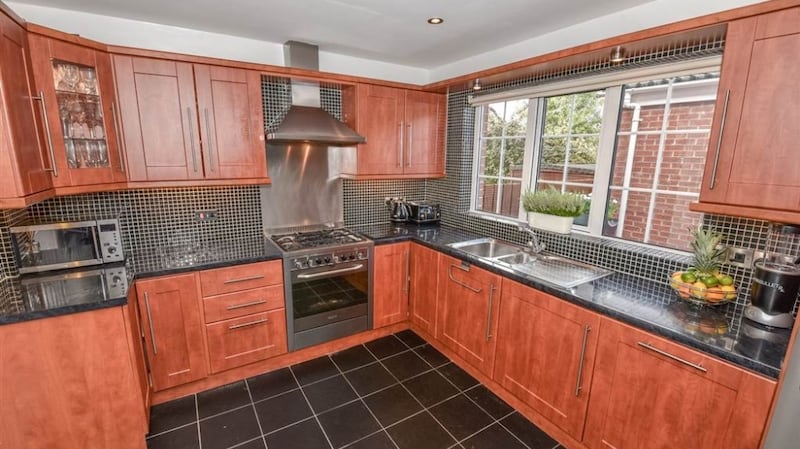It is, the estate agent promises, a “beautifully presented red brick semi-detached property with excellent standard of decor throughout”. It goes on to list all of the property’s many selling points, which include its “four well-proportioned bedrooms”, a “magnificent white marble carved fireplace”, “superb views” and, more unusually, its “enclosed private garden with paved pathways, built-in barbecue and floodlit artificial putting green installed for Rory McIlroy”.
This is the golfer's childhood home in Holywood, County Down, which went on sale last week, giving us a glimpse into the early years of a future champion. In addition to the putting green and an actual golf club just 20 minutes' walk away, the garage is fitted with nets and wired up for swing analysis.
It looks, in short, like a small-scale factory for the production of golfers, or at least of precocious junior golfers capable of chipping balls into washing machines on television programmes, as a nine-year-old McIlroy did in 1999. The graduation from that to winning major tournaments takes a little more than some back-garden synthetic turf, but this is where it all began.

Perhaps this will become the second branch of the world’s most niche hotel chain. After all, just five miles away in east Belfast, George Best’s family abode has changed hands twice since the death of his father, Dickie, in 2008 – when the estate agent insisted it was a bargain and “would be the same price if Mr and Mrs Smith had been living there” – and the latest owners have redecorated it in 1950s style, dotted it with photographs of the Best family and made it available to rent on Airbnb.
The current keyholders of McIlroy Manor might be misguided if they imagine that homes that had a historic habitant become instantly more profitable. In 2009 David Beckham’s childhood home in Leytonstone was put up for sale for £850,000 – considerably more than the £250,000 such properties normally fetched at the time. “We’ve had a couple of concrete offers, one for £1m from an Australian who is into Beckham memorabilia,” the estate agent told the press. “I’m meeting the owners tomorrow so they can decide which one they want to go for.” Sadly once they had ruled out all the imaginary ones there weren’t any left, and land registry records show that it sold two months later for £215,000.

In 2003 there was considerable fuss when Stanley Matthews’ childhood home in Stoke was sold at auction for £45,000, twice the estimate, to a collector of football memorabilia. In 2007 it sold again, for precisely the same price as the house three doors down sold for in the same week, and 17 per cent less than No57 down the road had gone for a month earlier.
These locations merit a small place in history. Just like Peter Parker’s radioactive spider-bite, Bruce Wayne’s parental double-homicide and Bruce Banner’s nuclear blast, every sportsman has an origin story. Often the legend and its location are so intertwined as to be inseparable.
The greatest batsman in the history of cricket, for example, has an origin story as simple as any comic book. We know how Don Bradman found and honed his remarkable skills, and where he did so. "At the back of our home was an 800-gallon water tank on a round brick stand," he recalled. "Armed with a small cricket stump I would throw a golf ball at this brick stand and try to hit the ball on the rebound. The golf ball came back at great speed and to hit it at all with the round stump was no easy task. This rather extraordinary and primitive idea was purely a matter of amusement, but looking back I can understand how it must have developed the co-ordination of brain, eye and muscle which was to serve me so well in important matches later on." The house, tank and all, has been fully restored to its Bradman-era pomp by the current owners, who keep stumps and golf balls handy for the use of curious visitors (who inevitably have to pay a small charge for the privilege).

Across the world there are countless similar locations, from Roger Federer's garage door ("I remember always loving to play against it, with any kind of ball. My mum got fed up because it was bang, bang, bang all day") to the ramshackle farmhouse in Umbuzeiro where Dani Alves practised his signature on the walls in preparation for sporting celebrity, and Rua Rubens Arruda in Bauru, where a young Pelé honed his skills with a ball made of socks.
Pelé’s houses haven’t fared much better than the socks: the one in Bauru burned down in 2014, several decades after the place in Tres Coracoes where he spent his first three years was demolished. That town belatedly woke up to his value, asked his mother, Celeste, and his uncle Jorge to dredge their memories of the place and built a replica. This simulacrum of his first home is now a museum, as is Babe Ruth’s in Baltimore. Muhammad Ali’s in Louisville was too but closed down last month due to lack of interest.
One former guest of the Best house reported that he could “feel his ghost and it was amazing”. We are a sentimental species, always in search of something to believe in, but these bricks have no memories. We can cherish stories of our sporting heroes’ genesis and hope to discover a shadow of their magic in the places they once slept, but what we find will be about as real as the McIlroys’ lawn.
(Guardian service)











